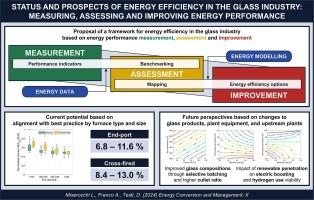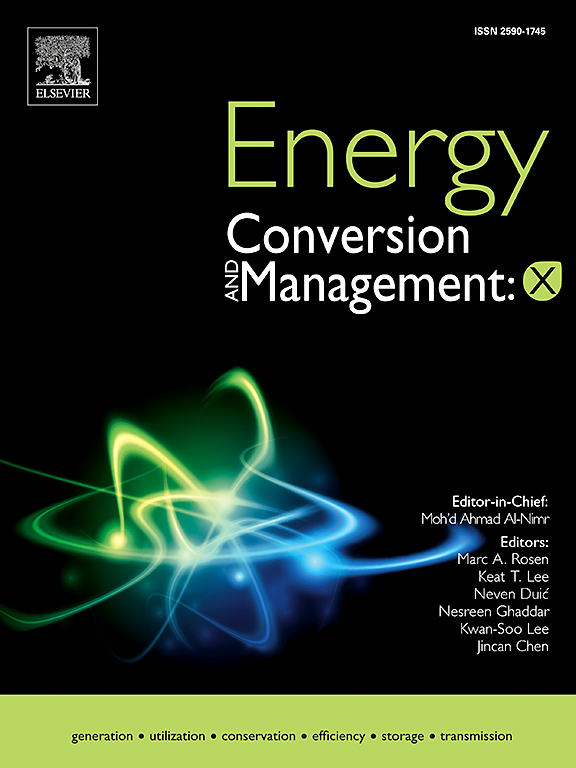Status and prospects of energy efficiency in the glass industry: Measuring, assessing and improving energy performance
IF 7.1
Q1 ENERGY & FUELS
引用次数: 0
Abstract
The significant share of energy-related emissions in the glass industry necessitates robust energy efficiency strategies. This paper evaluates the status and prospects of energy efficiency by integrating the measurement, assessment, and improvement of energy performance through energy data and modelling. Measurement and assessment are crucial for effective energy management in hard-to-abate industrial sectors, providing insight into the existence and extent of potential energy efficiency gains. The use of appropriate performance indicators allows for comparison across production contexts and the monitoring of improvements achieved through interventions. The benchmarking of a representative sample of container glass furnaces reveals a current potential for improvement of around 10% based on alignment with best practices. Energy modelling is used to map energy flows along the various systems involved in production, thereby identifying major energy losses. Energy efficiency options can then be categorised based on their contribution to improving energy performance, facilitating the identification of solutions that address current bottlenecks. The study discusses promising opportunities arising from improved batch compositions and outlines the role of renewable penetration on the viability of hydrogen use and furnace electrification. The proposed approach can be transferred to other hard-to-abate industrial sectors to drive progress in decarbonisation.

玻璃行业能源效率的现状和前景:测量、评估和改进能源性能
玻璃行业的能源相关排放占很大比重,因此必须采取强有力的能效战略。本文通过能源数据和建模对能源效率的测量、评估和改进进行了整合,从而对能源效率的现状和前景进行了评估。测量和评估对于难以消减的工业部门进行有效的能源管理至关重要,可深入了解潜在能效增益的存在和程度。使用适当的绩效指标可以对不同的生产环境进行比较,并监测通过干预措施实现的改进。通过对具有代表性的集装箱玻璃窑炉样本进行基准测试,发现在与最佳实践保持一致的基础上,目前的改进潜力约为 10%。能源建模用于绘制生产过程中各系统的能源流,从而确定主要的能源损耗。然后,可根据能效方案对提高能源绩效的贡献对其进行分类,从而有助于确定解决当前瓶颈问题的方案。该研究讨论了改进批次成分所带来的机遇,并概述了可再生能源渗透对氢气使用和熔炉电气化可行性的作用。所提出的方法可应用于其他难以消减的工业部门,以推动脱碳进程。
本文章由计算机程序翻译,如有差异,请以英文原文为准。
求助全文
约1分钟内获得全文
求助全文
来源期刊

Energy Conversion and Management-X
Multiple-
CiteScore
8.80
自引率
3.20%
发文量
180
审稿时长
58 days
期刊介绍:
Energy Conversion and Management: X is the open access extension of the reputable journal Energy Conversion and Management, serving as a platform for interdisciplinary research on a wide array of critical energy subjects. The journal is dedicated to publishing original contributions and in-depth technical review articles that present groundbreaking research on topics spanning energy generation, utilization, conversion, storage, transmission, conservation, management, and sustainability.
The scope of Energy Conversion and Management: X encompasses various forms of energy, including mechanical, thermal, nuclear, chemical, electromagnetic, magnetic, and electric energy. It addresses all known energy resources, highlighting both conventional sources like fossil fuels and nuclear power, as well as renewable resources such as solar, biomass, hydro, wind, geothermal, and ocean energy.
 求助内容:
求助内容: 应助结果提醒方式:
应助结果提醒方式:


